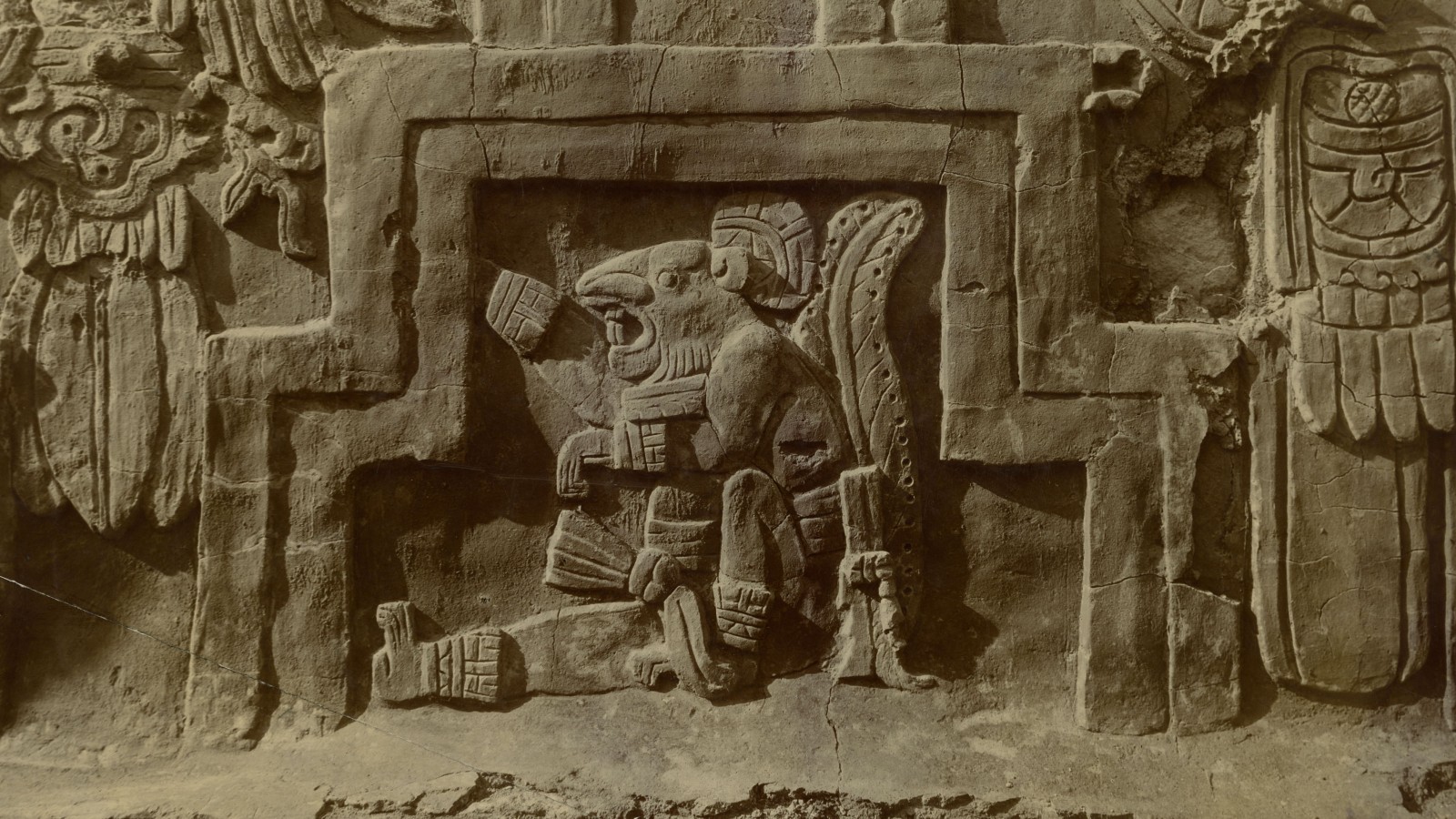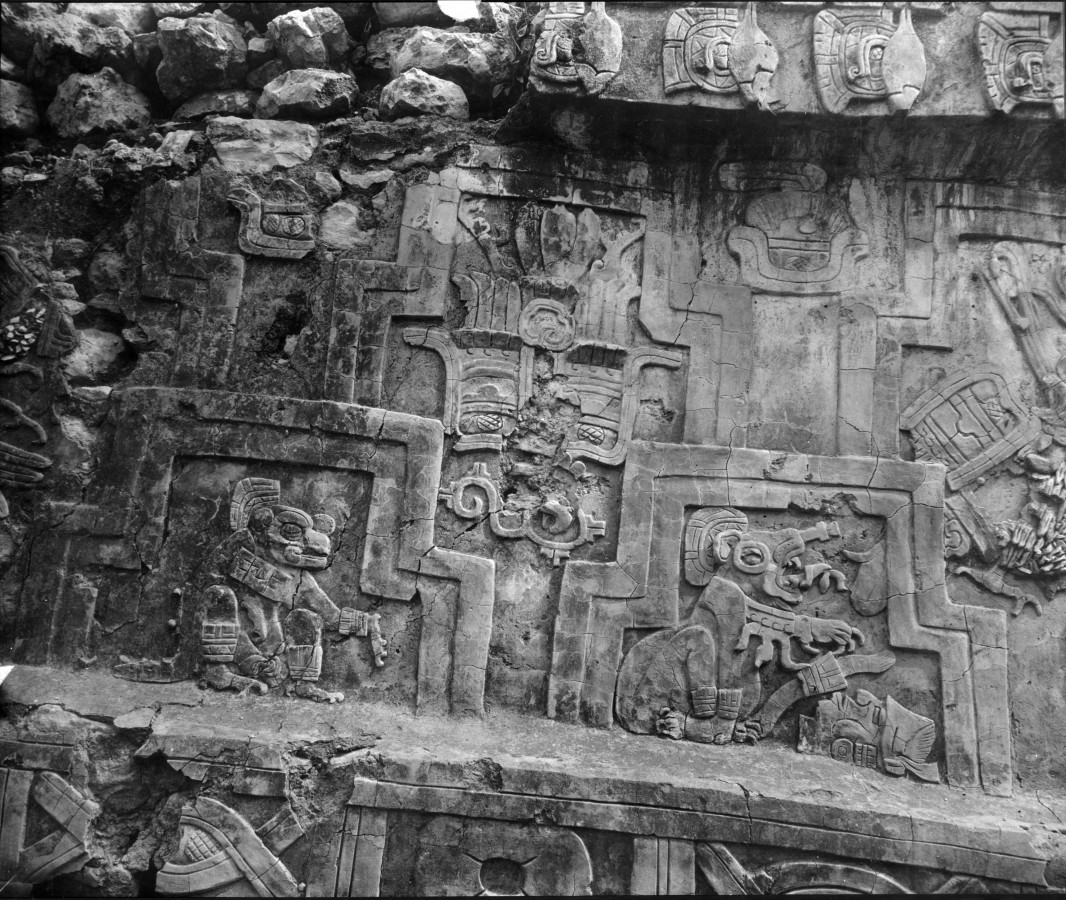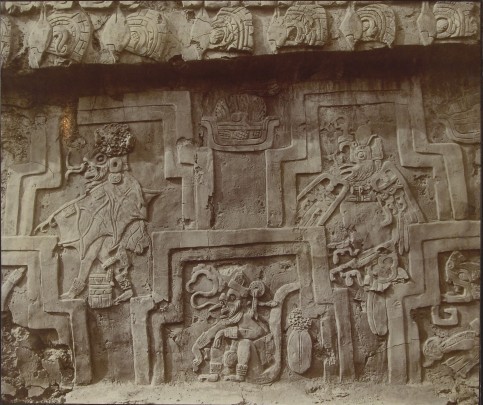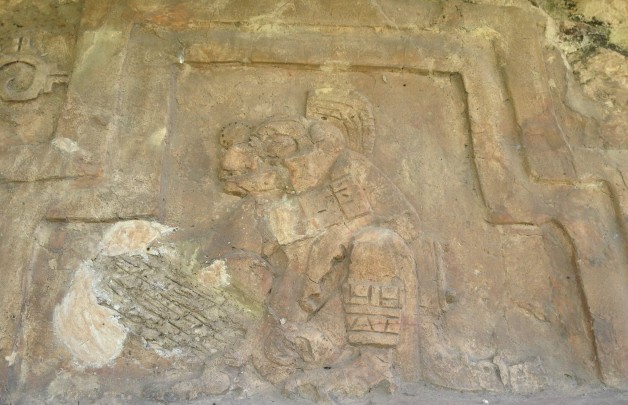Acanceh
Cry of the deer
One of the main centers in the northern Yucatan Peninsula. It has two magnificent structures: The Pyramid and the Palace of Stuccos. The latter has a frieze decorated with animals, indicating a possible connection with Teotihuacan.
About the site
Founded in the Mayan Preclassic (700-50 BC), much of its importance was due to the relations it maintained with other contemporary cities such as Dzibilchaltun, Oxkintok and Mayapan up until 1000 AD. After that date it entered a slow decline.
The Acanceh archeological site is located in the town of the same name, 16 miles to the south of the city of Merida in Yucatan. According to the Cordomex Maya-Spanish Dictionary its name means “cry of the deer” from "akan" meaning cry and "keh," deer.
The city had an area of 1.2 square miles and 300 structures have been recorded, with the most important being The Pyramid and the Palace of the Stuccos, which are clear examples of the site's architecture.
The Pyramid was once decorated with facade masks modeled in stucco, but these were destroyed over the years. A total of eight stucco facade masks were situated on both sides of the four stairways at the level of the third section. In 1908 Teobert Maler noted that there were two facade stucco masks located on the south facade.
Subsequent archeological work has discovered two stucco masks on the west side, two on the north side and one on the east side. The discovery has been one of the most significant of recent years.
The stucco facade masks at Acanceh measure between 7 feet 5 inches and 11 feet 6 inches in height and between 10 feet and 12 feet 2 inches in width. Each of the five stucco facade masks have a pair of ear flares, with three main designs repeated on each consisting of spirals, knots and in the lower part designs in the form of ears of corn which might be symbols of fertility and abundance. On the forehead they have a type of headdress divided into three boxes with small spirals inside.
The central element of the stucco facade masks of Acanceh is a decorated anthropomorphic head, modified and surrounded by symbolic elements which relate to the sun god Kinich Ahau. The stucco facade masks were found over stonework edifices and in a place where they could be seen by the whole community.
The Palace of the Stuccos is 164 feet wide by 20 feet high, and it presents a carved stone frieze with figures reminiscent of the Teotihuacan style.
The Acanceh archeological site is located in the town of the same name, 16 miles to the south of the city of Merida in Yucatan. According to the Cordomex Maya-Spanish Dictionary its name means “cry of the deer” from "akan" meaning cry and "keh," deer.
The city had an area of 1.2 square miles and 300 structures have been recorded, with the most important being The Pyramid and the Palace of the Stuccos, which are clear examples of the site's architecture.
The Pyramid was once decorated with facade masks modeled in stucco, but these were destroyed over the years. A total of eight stucco facade masks were situated on both sides of the four stairways at the level of the third section. In 1908 Teobert Maler noted that there were two facade stucco masks located on the south facade.
Subsequent archeological work has discovered two stucco masks on the west side, two on the north side and one on the east side. The discovery has been one of the most significant of recent years.
The stucco facade masks at Acanceh measure between 7 feet 5 inches and 11 feet 6 inches in height and between 10 feet and 12 feet 2 inches in width. Each of the five stucco facade masks have a pair of ear flares, with three main designs repeated on each consisting of spirals, knots and in the lower part designs in the form of ears of corn which might be symbols of fertility and abundance. On the forehead they have a type of headdress divided into three boxes with small spirals inside.
The central element of the stucco facade masks of Acanceh is a decorated anthropomorphic head, modified and surrounded by symbolic elements which relate to the sun god Kinich Ahau. The stucco facade masks were found over stonework edifices and in a place where they could be seen by the whole community.
The Palace of the Stuccos is 164 feet wide by 20 feet high, and it presents a carved stone frieze with figures reminiscent of the Teotihuacan style.
Did you know...
- The stones of the Pyramid are worked in the Puuc style.
- The motifs of the frieze in the Palace of the Stuccos are birds of prey, squirrels and bats.
- The archeological remains suggest that the city supported a large population.
Practical information
Monday to Sunday from 08:00 to 17:00 hrs.
$75.00 pesos
Se localiza en el pueblo del mismo nombre, a 25 km al sureste de Mérida.
From the city of Mérida, take State Highway 180 towards Valladolid and after a few miles take a right (to the south) on highway 184 towards Felipe Carrillo Puerto (Chan Santa Cruz), which leads to Acanceh. The structures are found between streets 18 and 21.
Services
-
+52 (999) 944 4034
-
This email address is being protected from spambots. You need JavaScript enabled to view it.
Directory
Encargado del Despacho del Centro INAH Yucatán
José Arturo Chab Cárdenas
This email address is being protected from spambots. You need JavaScript enabled to view it.
+52 (999) 913 4034, ext. 398003
Administrador del Centro INAH Yucatán
Felipe de Jesús Flores Laguna
This email address is being protected from spambots. You need JavaScript enabled to view it.
+52 (999) 913 4034, ext. 398006













